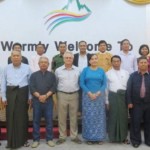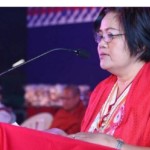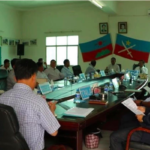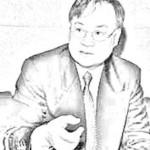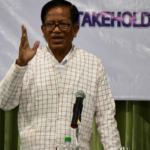Burma News International (BNI) | September 7, 2016
The Union Minister of Ethnic Affairs, Nai Thet Lwin, said the Burmese military and ethnic armed organisations (EAOs) should sign an immediate ceasefire and continue political dialogue to implement the peace process in Burma.
He made the remarks to I.M.N.A. on the last day of the Union Peace Conference (Also called the 21st Century Panglong Conference) held at the Myanmar International Convention Centre in Naypyidaw from 31 August to 3 September.
He said: “Everyone needs to find solutions to the political issue after signing an all-inclusive ceasefire. Both the military and EAOs need to announce a nationwide ceasefire.”
He said that local government in states and regions where there is conflict have been facing difficulties so there needs to be an immediate ceasefire before the second Union Peace Conference is held in six months.
Fighting between the Burma Army and EAOs continued to break out in Karen, Kachin and Shan states while the Union Peace Conference was being held.
U Myint Soe, a retired general and member of the central executive committee of the Union Solidarity and Development Party (USDP) said to reporters: “The Burmese military and the EAOs are those most involved. We need to understand why it
Daw Saw Mra Razar Lin, a central executive member of the Arakan Liberation Party (ALP), one of the eight EAOs to sign the NCA, said that in a democratic system the military should be under a civilian administration and that she had openly discussed the role of the military at the Union Peace Conference.
She said: “Even though it has been written into the constitution one can deceive the public if the public does not know about it. Members of the public discussed this at the conference. The public has the ability to hear what it wants to hear. On a positive note, I believe that this conference has been transparent.”
Papers from 72 representatives of different organisations, expressing their positions and views, were submitted to the Union Peace Conference.
Of those, five representatives were from the government, five were from parliament, ten from the military, 14 were from EAOs, 26 were from political parties, six were from ethnic groups and six were deemed to be ‘relevant’ representatives.
National-level dialogues on regional and ethnic race issues are due to be held in October and November,bn in line with the timetable outlined in the framework for political dialogue.
The second meeting of the Union Peace Conference is due to be held in six months time.
Reporting by Min Thuta for I.M.N.A
Translated by Thida Linn
Edited in English by Mark Inkey for BNI
This article originally appeared on Burma News International (BNI) on September 7, 2016.


